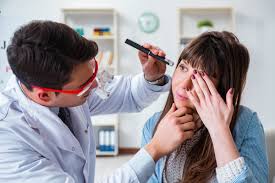Experiencing a traumatic vision injury can be life-altering, affecting everything from daily activities to emotional well-being. If you or someone you care for is dealing with such an injury, it’s key to take the right steps toward recovery. While every situation is different, following a structured approach can help you regain control and start moving toward improved vision health. This guide walks you through five key steps to seek treatment for traumatic vision injuries while understanding the challenges of post-trauma vision syndrome (PTVS).
Step 1: Recognize and Document Your Symptoms
The first step in seeking treatment is identifying and keeping track of your symptoms. Traumatic vision injuries often manifest in a wide range of ways, from blurred vision and double vision to headaches or difficulties with focus. These could also point to the possibility of post-trauma vision syndrome (PTVS), a condition in which the eyes struggle to work together after a traumatic event.
To help know precision when you meet with healthcare providers, look into documenting the following details:
- Onset and duration of symptoms
- Visual challenges during specific activities (e.g., reading or driving)
- Any pain or discomfort in or around the eyes
Step 2: Consult a Vision Specialist
Once you’ve noted your symptoms, the next step is to connect with a vision specialist. Seek out an ophthalmologist, optometrist, or neuro-optometrist who has experience dealing with PTVS or other complications related to vision injuries. Look for professionals who specialize in vision rehabilitation or vision therapy, as they can provide the expertise you need.
Step 3: Explore Your Treatment Options
After a diagnosis, your healthcare provider will outline possible treatment paths. Depending on the nature and extent of your injury, these options may include one or a combination of therapies. Understanding these approaches empowers you to make informed decisions about your care.
Here are some examples of treatment options to look into:
- Vision Therapy: This includes a series of targeted exercises designed to improve vision coordination, focus, and eye movements.
- Lens Prescriptions: Specialized lenses, such as prism lenses, can help alleviate difficulties associated with post-trauma vision syndrome.
- Occupational Therapy: Often recommended in conjunction with vision therapy, occupational therapy helps adapt your environment and routines to manage challenges effectively.
Step 4: Build a Support System
Lean on friends and family who can assist with daily tasks when vision challenges feel overwhelming. Joining local or online support groups for trauma survivors or those dealing with vision impairments can provide encouragement and shared experiences. Don’t hesitate to involve caregivers who can help advocate for your needs during medical visits or assist with transportation to therapy sessions. A support system prevents feelings of isolation and keeps you motivated to follow your treatment plan.
Step 5: Monitor Progress and Adjust as Necessary
Recovery from traumatic vision injuries is rarely a straight path. It’s key to monitor your progress and work closely with your specialists to make adjustments to your treatment plan when necessary. Schedule follow-up appointments to assess vision changes and recalibrate therapeutic exercises or lens prescriptions as needed.
Supporting Post-trauma Vision Syndrome
The road to recovery after a traumatic vision injury can feel overwhelming, but you don’t have to face it alone. By following these five steps—recognizing your symptoms, consulting specialists, exploring treatment options, building a support system, and monitoring your progress—you take meaningful actions toward improving your quality of life. Understanding conditions like post-trauma vision syndrome is an important part of this process, and seeking professional guidance is imperatice.
Recommended Articles
Comprehensive Guide to Reverse Studded Angle
Aqua Boiler Spares – Your Trusted Source for Quality Boiler Parts
Complete Guide to Movado France Pen Refills: Types, Compatibility, and Maintenance
Nicker Flex and K2 Cinch TC: A Comprehensive Guide to Top Sports Gear




